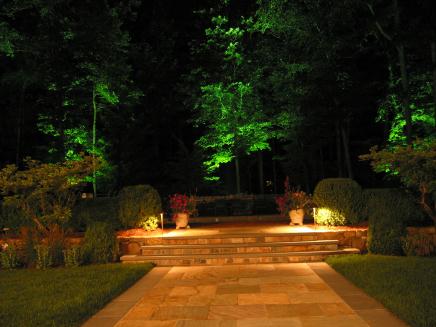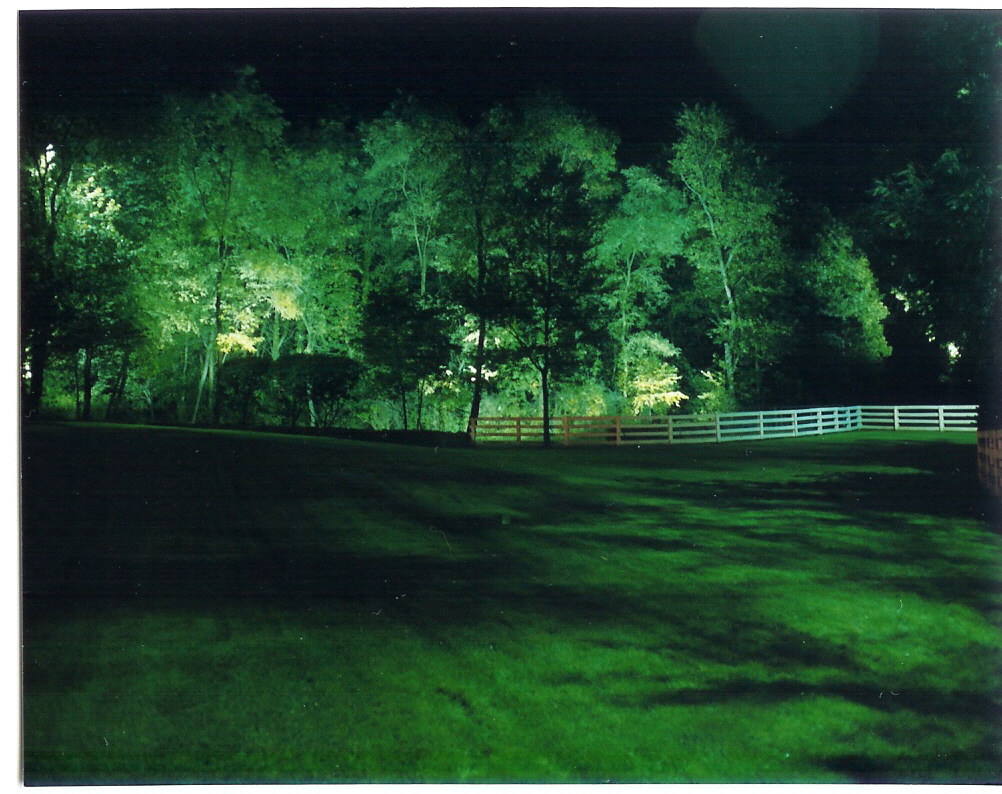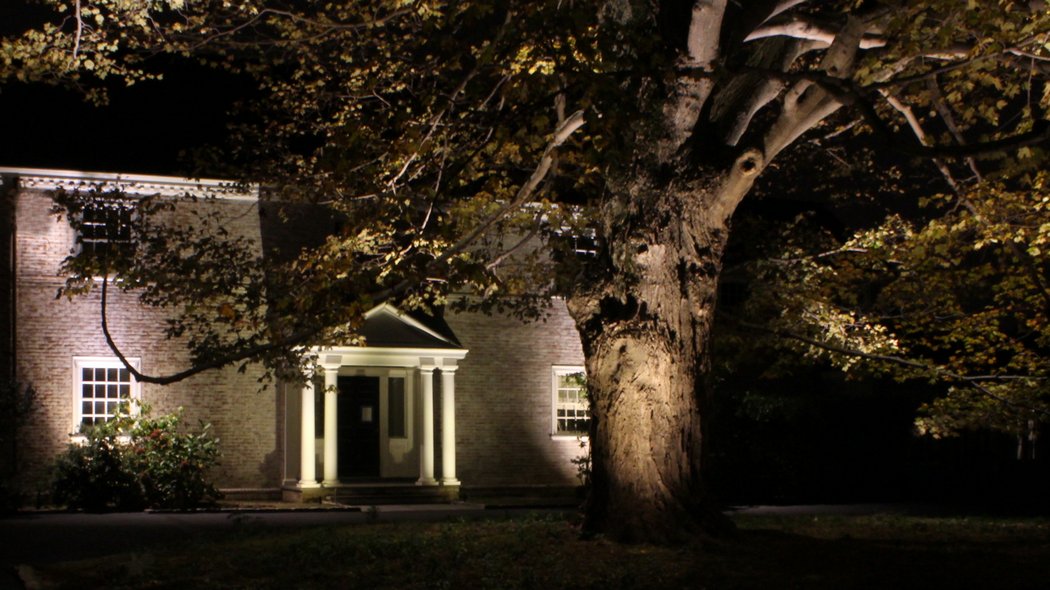
|
Design Considerations
"Moonlight falls gracefully on the lawn and gardens below. The silhouette of a huge oak tree reaches out into the nighttime sky. Overhead illuminated branches form a spectacular canopy. Birch and lilac sway in a warm gentle breeze, while shadows dance on the carefully groomed lawn below. A couple strolls from the terrace through the garden and into the moonlight." Landscape lighting brochures conjure up romantic images like these to promote their product. Romanticized advertising? Yes, but it may be fair to say that landscape lighting is capable of enhancing and even changing one's lifestyle. Landscape lighting has been promoted as a means to extend the day and enable working couples to enjoy the outdoors even if their evening doesn't begin until after sunset. It can be much more. At its best, landscape lighting is pure theatre in your back yard. 
Once it has been determined that a project is financially viable, a design is developed which reflects the client's tastes and expectations as well as the designer's own sense of the property. There are times when the client's thinking is, "I'll know if I like it when I see it". If the property is one in which there is little lighting potential, these limitations will be discussed with the client upfront rather than run the risk of disappointment after the fact. It may be that additional plants need to be installed that could be incorporated into the lighting plan. Designing is not limited to simply visiting the property and creating a plan. Before any boardwork is done a nighttime visit to the property is a good idea. Once the design is on paper, the designer must see that it comes to fruition by ensuring that the installation crew has a thorough understanding of the plan. Very detailed plans, good communication and well-trained crews are crucial if a plan is to be executed as the designer intended. Once the job is completed, a "night-set" provides the client an opportunity to experience the lighting design by walking through the lighting and expressing their happiness or displeasure with the design. We guarantee that the client will be happy with the lighting aesthetically. This means we absorb the cost of modifications to the plan. However, this does not include areas that were not addressed in the plan or additional fixtures. 
Most homeowners generally feel comfortable spending about 1% to 3% of the property value of their home on landscape lighting. Landscape lighting designs with a turnkey price of up to $5,000 will usually be comprised of low voltage lights because of the savings on electrical and fixture costs. |
The design starts with the client
The first step in putting together a design is called the discovery. This involves going to see the property and the client. Even the most general survey of a property will reveal what is feasible. Discovering your expectations is just as important as seeing the property. Have you seen lighting you like? Have you seen our lighting? Are you interested in security lighting as well as aesthetic lighting? What are you accustomed to? People living in an urban area may be upset if there are no streetlights in their new neighborhood. They may want more or less depending upon what they are accustomed to and how secure they feel in the house they are living in. If they have been in the home for a while and are comfortable, then the lighting may be purely for aesthetic and functional purposes. 
It's usually a good idea to start from the place where the client will spend the most time viewing the lighting. This could be a terrace, a pool area, the drive, or the front door. If there is no identifiable spot, then the most likely area is selected, it should be near the house, and the design works outwards from that point. Designing Landscape Lighting No matter if you're designing a landscape, a house, or anything for that matter, you need an approach, an idea of where you are going. The approach may not be immediately apparent. Our designers like to spend time at a property to get a feel for it. The experienced designer knows what trees light well and which ones don't. A walk through the property can provide some initial thoughts as to what are the best opportunities for lighting and what areas present problems. It may be that some of the best plant material for lighting is in an area that the client is not interested in illuminating, or it may not be seen. There's no point in lighting a tree that can't be seen. When walking the property primary viewing angles need to be identified. Some plants are seen from many viewing angles, such as in a circular drive. Plants seen from multiple angles usually require putting fixtures below grade to avoid glare. The designer will distil the property down to its most outstanding features as well as its limitations. If it has many rock outcroppings, for example, this may be used as a motif for the design. If there are lots of tall oak trees, the designer will decide if they will work best when utilized for up-lighting or moonlighting or both. |